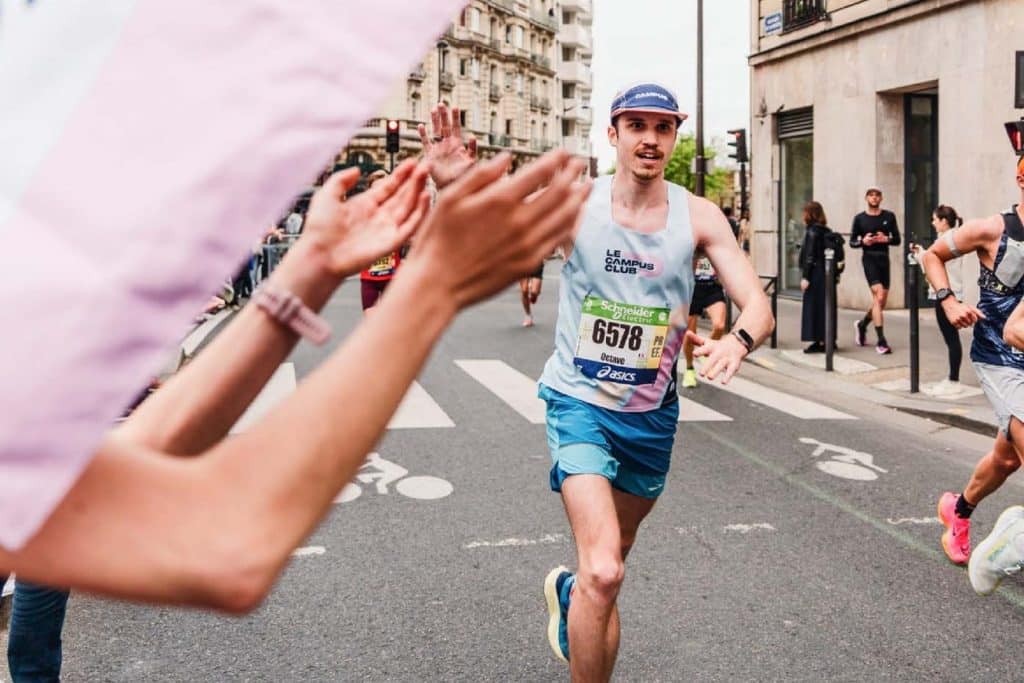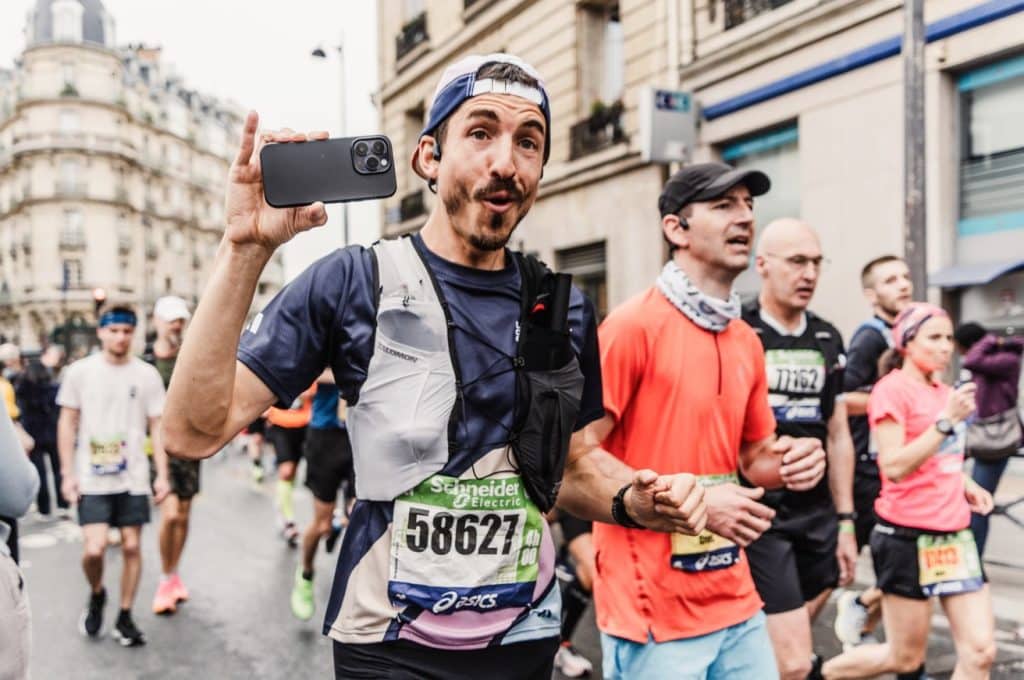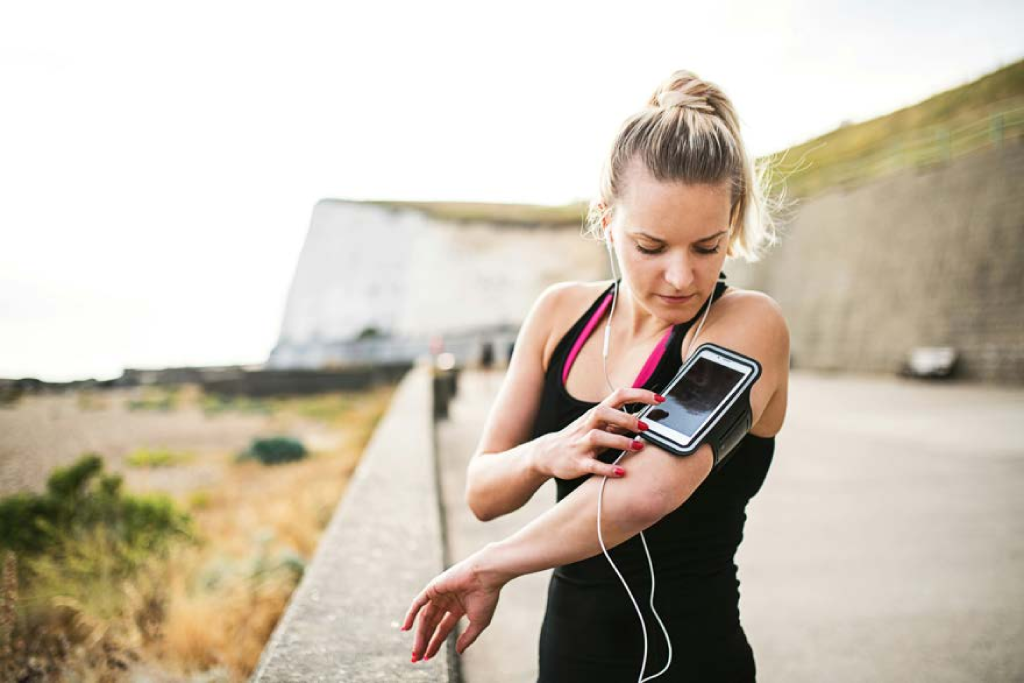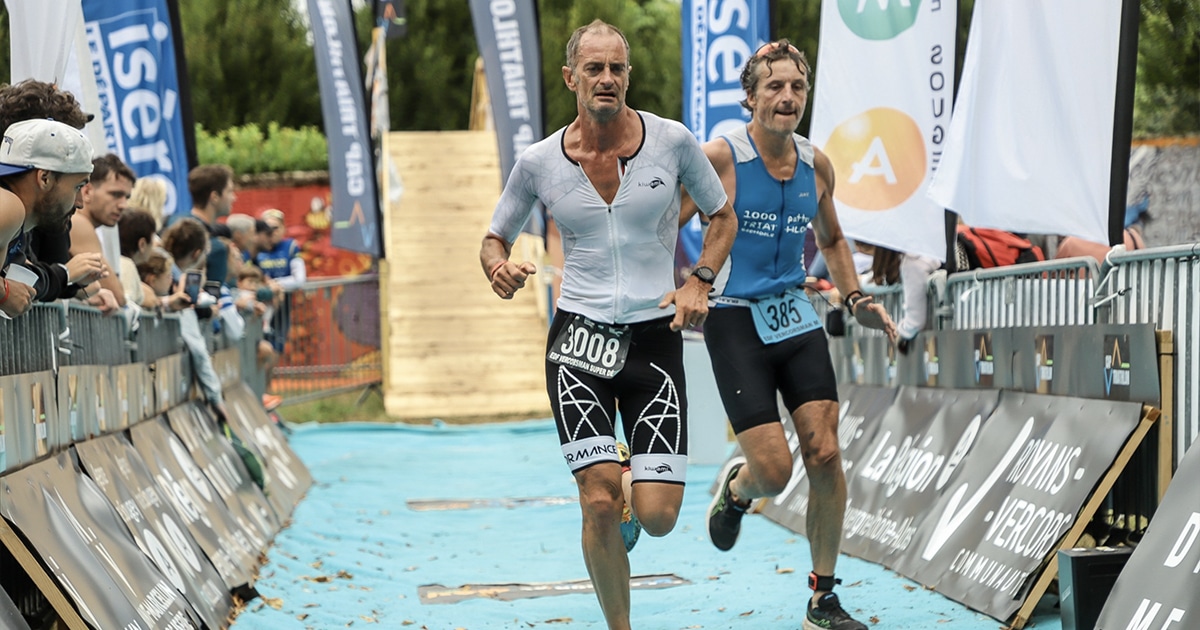The Voice of Runners: Focus on the Major Running Survey of 2025
Campus, the renowned coaching app, has recently released the second edition of its Major Running Survey (Grande Enquête Running 2025) . It’s an opportunity to delve into the running trends of 2025, a thriving activity. Average pace, distance covered, training volume, favorite races… Let’s explore the habits shaping the practice of running in France.
| Training Habits of Runners
Runners know it. To improve in running, you have to put in some volume. There’s no choice but to lace up your shoes and train regularly. With an average of 10 sessions per month, the French are true running enthusiasts throughout the year. This training dedication is built during winter with a mix of new resolutions and performance goals, especially with the highly anticipated Paris Marathon on the spring horizon. Thus, it’s unsurprising that running activity peaks during the first three months of the year (12 runs per month).
This enthusiasm is also evident in the distances covered during training. On average, the French cover 8.8 km during a running session, an effort that takes them approximately 52 minutes on average. The duration of these runs might seem lengthy, but this is largely due to the importance of long runs in runners’ training. If you wander through the Bois de Boulogne or along the Parisian quays on a Sunday morning, you’ve likely noticed: the long run is the weekly rendezvous for runners—the outing not to miss.
- Runners average 10 runs per month, roughly 2 to 3 times a week.
- The average pace is 6’17/km (6’01/km for men, 6’51/km for women).
- The average session duration is 52 minutes.
- The average distance for an outing is 8.8 km.
With elite athletes being spotlighted and social media teeming with ever-faster performances, one might think that to be a “real runner,” you must run fast. Yet, the reality is quite different: the average pace of runs is around 6’17/km (6’01/km for men and 6’51/km for women). This proves that most run at their own pace, detached from the clock. So, let’s say no to insecurities: every pace is valid, and running remains foremost about enjoyment, not comparison.

| Running to Challenge Oneself: The Half-Marathon is the Favorite Distance
If runners train hard, it’s because they have goals. Race participation soared in 2024, with over half of the runners (56%) signing up for more races than the previous year. And in 2025? The trend is confirmed. The desire to challenge oneself is stronger than ever. In fact, setting a goal and pushing one’s limits remains the primary source of motivation, across all genders.
In this context, one race clearly stands out. 66% of runners plan to run a half-marathon in 2025, a popular choice for good reasons. This distance ticks all the boxes: it’s an accessible yet demanding challenge, requiring investment without necessarily imposing sacrifices on daily life. The marathon still intrigues nearly one in two runners. An impressive figure when considering the physical and mental commitment this distance demands. Trail running is also gaining traction, driven by growing popularity and increasingly varied formats.
Average times for each distance
- 5 km: 24’44 for men, 31’37 for women
- 10 km: 50’41 for men, 1h01’46 for women
- Half-marathon: 1h49’55 for men, 2h10’38 for women
- Marathon: 3h51’17 for men, 4h29’04 for women
When it comes to performance, the average times clearly show that running is a sport for everyone. 24’44 over 5 km for men, 31’37 for women. For the marathon, times hover around 3h51 for men, 4h29 for women. These figures might put things into perspective for some. Because what truly matters here is not so much the watch but the self-challenge to reach one’s personal finish line.

| A growing connection in running
Running alone is a thing of the past. Or rather, we run alone, but connected. Today, social media plays a central role in our daily lives, and running is no exception. The way runners live, narrate, and share their passion has evolved significantly. YouTube, Instagram, blogs, podcasts, TikTok… the platforms are abundant, and usage varies by generation. Among the 24-34 age group, TikTok has exploded: 56% use it for running information, compared to just 5% the previous year.
More than half of runners follow at least one influencer, elite athlete, specialized media, or race. This diversity of sources reflects the current needs: seeking advice, inspiration, motivation, or sometimes simply entertainment. For some, it’s even a gateway to the practice or simply a way to keep the passion alive. For others, running remains an intimate space, away from prying eyes and “likes.” There are even those who abandon Strava, tired of every run becoming a performance under the spotlight.
Yet one thing is clear: content influences. One-third of runners say that what they consume online changes their perception of brands. Without falling into marketing clichés, running also becomes a field of personal storytelling, where everyone can write and share their own adventure. Brands have seized the opportunity and increasingly partner with amateur running influencers to tell inspiring stories.

| Courir quand on est une femme : encore loin d’être simple
Mais derrière ces chiffres et ces récits inspirants, il y a aussi des réalités difficiles à ignorer. Bien que les femmes soient de plus en plus nombreuses à courir, aujourd’hui encore, trois femmes sur quatre déclarent ne pas pouvoir courir en toute liberté à cause du sentiment d’insécurité. Un chiffre qui interpelle, et qui rappelle que l’acte de courir n’a pas la même portée pour tout le monde. Choisir ses horaires, ses itinéraires, ou renoncer à une sortie faute de se sentir en sécurité, c’est le quotidien de nombreuses coureuses. Là où 82% des hommes courent sans trop se poser de questions. Pour aider les femmes à se sentir plus en sécurité, l’application Strava a développé une carte 3D avec les itinéraires les plus empruntés ainsi qu’une carte d’activités nocturne. Avec ces outils, les coureuses peuvent choisir des parcours fréquentés et plus rassurants. Surtout quand on sait que le sexisme ordinaire s’invite lui aussi sur les sentiers. Trois fois plus de femmes que d’hommes déclarent avoir déjà été dérangées par des remarques ou des comportements déplacés en courant. Des situations inconfortables, parfois angoissantes, qui rappellent que l’espace public n’est pas toujours un terrain neutre. Bien sûr, ces outils ne règlent pas le fond du problème. Mais en attendant, courir là où il y a du monde, c’est souvent un bon moyen de se sentir un peu plus en sécurité.
Autre sujet encore trop peu visible : l’impact du cycle menstruel. Si 27% des femmes disent être fortement impactées dans leur pratique, et que 44% pensent qu’une meilleure adaptation de leur entraînement serait utile, le contenu sur le sujet reste rare. 58% des coureuses ne consomment aucun contenu lié aux problématiques sportives féminines. Manque d’intérêt de la part des médias ? Ou manque de relais puissants ? Difficile à dire. Mais une chose est sûre : ici aussi, il y a une voix à faire entendre.

| The Methodology of the Campus Survey
The Campus study is based on a strong panel: over 13,000 respondents, 60% of whom are men and 40% women. It’s vast and crucial to better understand current trends. However, it should also be noted that this panel consists exclusively of Campus app users. In other words, runners who are highly invested in their practice, following a training plan, and many preparing for races.
84% of them reported having an intermediate level or higher, and 79% run three or more times a week. So, this is not quite the portrait of a beginner or a “Sunday runner.” It’s not a bias, but it’s an important context to consider when interpreting the numbers.
This major Campus survey confirms that running continues to evolve constantly. Driven by a passionate and increasingly active community, the sector is developing with more and more races. The French enthusiasm for running is undeniable, and long distances are gaining popularity. Behind these kilometers covered, beyond the stopwatch, there are also multiple motivations, strong stories, life obstacles, and a common need: to run one’s way, with that feeling of freedom and the satisfaction of self-exceeding.
✓ Find all the survey details on Campus Coach’s website.



